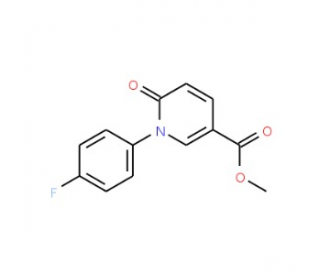详细说明
- Species ReactivityHuman
- SpecificityDetects human EpCAM/TROP-1 in ELISAs.
- SourceMonoclonal Mouse IgG 2B Clone # 158206
- PurificationProtein A or G purified from hybridoma culture supernatant
- ImmunogenMouse myeloma cell line NS0-derived recombinant human EpCAM/TROP-1
Extracellular domain - FormulationSupplied in a saline solution containing BSA and Sodium Azide.
- LabelPhycoerythrin
- Recommended
ConcentrationSample
- Flow Cytometry10 µL/10 6 cellsSee below
| Flow Cytometry | Detection of EpCAM/TROP‑1 in HT‑29 Human Cell Line by Flow Cytometry. HT‑29 human colon adenocarcinoma cell line was stained with Mouse Anti-Human EpCAM/TROP‑1 PE‑conjugated Monoclonal Antibody (Catalog # FAB9601P, filled histogram) or isotype control antibody (Catalog # , open histogram). View our protocol for . |
- ShippingThe product is shipped with polar packs. Upon receipt, store it immediately at the temperature recommended below.
- Stability & StorageProtect from light. Do not freeze.
- 12 months from date of receipt, 2 to 8 °C as supplied.
Epithelial Cellular Adhesion Molecule (EpCAM), also known as KS1/4, gp40, GA733-2, 17-1A, and TROP-1, is a 40 kDa transmembrane glycoprotein composed of a 242 amino acid (aa) extracellular domain with two epidermal-growth-factor-like (EGF-like) repeats within the cysteine-rich N-terminal region, a 23 aa transmembrane domain, and a 26 aa cytoplasmic domain. Human and mouse EpCAM share 82% aa sequence identity. In human, EpCAM also shares 49% aa sequence homology with TROP-2/EGP-1. During embryonic development, EpCAM is detected in fetal lung, kidney, liver, pancreas, skin, and germ cells. In adults, human EpCAM is detected in basolateral cell membranes of all simple, pseudo-stratified, and transitional epithelia, but is not detected in normal squamous stratified epithelia, mesenchymal tissue, muscular tissue, neuro-endocrine tissue, or lymphoid tissue (1). EpCAM expression has been found to increase in actively proliferating epithelia tissues and during adult liver regeneration (1, 2). EpCAM expression is also found to increase in human malignant neoplasias, with most carcinoma expressing EpCAM including those of arising from squamousal epithelia (1). EpCAM has been shown function as a homophilic Ca2+ independent adhesion molecule (3). Homophilic adhesion via EpCAM requires the interaction of both EGF-like repeats, with the first EGF-like repeat mediating reciprocal interaction between EpCAM molecules on opposing cells, while the second repeat is involved in lateral interaction of EpCAM. Lateral interaction of EpCAM lead to the formation of dimers and tetramers (4). During homophilic adhesion the cytoplasmic tail of EpCAM interacts with the actin cytoskeleton via a direct association alpha -actinin (5).
- References:
- Balzar, M. et al. (1999) J. Mol. Med. 77:699.
- Boer, C.J, et al. (1999) J. Pathol. 188:201.
- Litvinow, S.V. et al. (1994) J. Cell Biol. 125:437.
- Balzar, M. et al. (2001) Mol. Cell. Biol. 21:2570.
- Balzar, M. et al. (1998) Mol. Cell. Biol. 18:4388.
- Long Name:Epithelial Cell Adhesion Molecule
- Entrez Gene IDs:4072 (Human); 17075 (Mouse)
- Alternate Names:17-1A; 323/A3; ACSTD1; antigen identified by monoclonal AUA1; CD326 antigen; CD326; Cell surface glycoprotein Trop-1; chromosome 4, surface marker (35kD glycoprotein); DIAR5; EGP; EGP-2; EGP314; EGP40; EpCAM; epithelial cell adhesion molecule; Epithelial cell surface antigen; Epithelial glycoprotein 314; Epithelial glycoprotein; ESA; GA733-2; GA733-2EGP34; gp40; hEGP314; HNPCC8; KS 1/4 antigen; KS1/4; KSAHEA125; M1S2; M4S1; M4S1Ly74; Major gastrointestinal tumor-associated protein GA733-2; MIC18MH99; MOC31; TACST-1; TACSTD1; TROP1; TROP1CD326; Tumor-associated calcium signal transducer 1CO-17A












